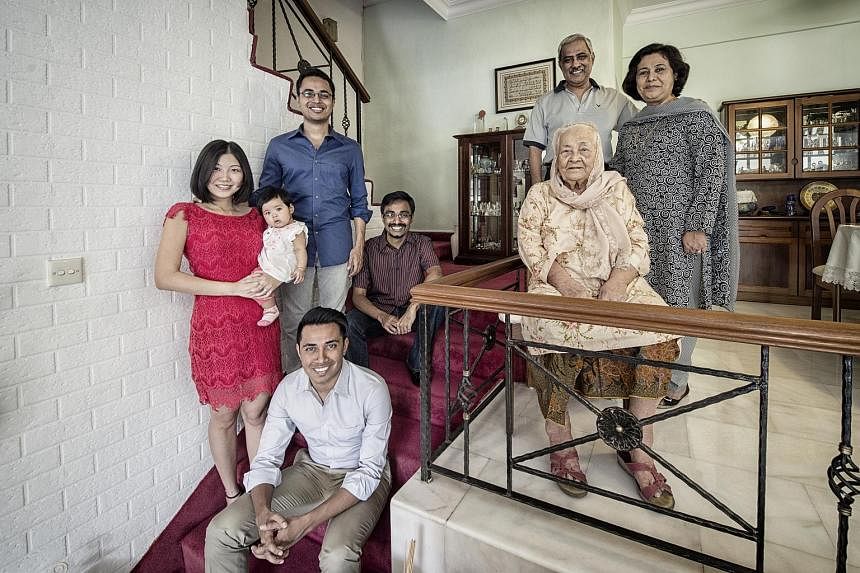What's the Singapore Story?
The answer is not straightforward because different people will have different views of what story they most identify with this country.
For some, it might be founding Prime Minister Lee Kuan Yew's memoirs.
That story though is told from his point of view even if he had the advantage of being at the centre of many of the country's most dramatic political events.
What of the many other people who might have seen the story differently or have other stories to tell? Do their accounts matter and have a place in the nation's story-telling?
When a group of us at The Straits Times were tasked with writing a book to commemorate Singapore's 50th anniversary, we spent much time debating this point.
How do you capture the story of this nation, its achievements and disappointments, the ups and downs, the personal glories and tragedies that are part of any society's history? How do you make sure the story is not one-dimensional but multi-colour and flavourful?
If we had told it the usual way, starting with the political battles with Malaysia, then separation, and the years of nation-building and economic development, we feared it would be an overly familiar story.
It would probably also have to be told from the top down, with the leadership taking the limelight.
We decided instead to do it through the stories of ordinary Singaporeans who, through the lives they led and the things they did, told the Singapore story as much as the historical accounts.
It turned out to be a deeply satisfying project because we found a treasure trove of stories, which is not surprising because Singapore has been a very happening place these past 50 years.
It is not a dull place which stays put.
In all, we found 58 story-tellers from taxi driver to bus captain, teacher, satay man, doctor, scientist, soldier, policeman, athlete, mountain climber, civil servants and many more.
Here are some of my favourites in the book, Living The Singapore Story, which was launched last Friday.
Kopitiam boss Lim Bee Huat started work cleaning tables at coffee shops for $1 a night. He was so poor he used to eat the food left by people at roadside offerings during the Hungry Ghost Festival.
But he worked his way up, starting his first stall at the old Esplanade ground. Today, he owns more than 80 outlets and his staff get a Rolex watch from him when they have worked for more than 10 years.
There is a veteran unionist, Mr Abdul Rahman Mahbob, who, when he was just starting work in 1966 at the Pasir Panjang power station, saw his fellow workers going on strike for higher pay.
He was not part of the strike then but he was so moved by their dedication and courage, he decided to join the union and rose to become president of the Union of Power and Gas Employees.
He has seen grown men cry when told they were being retrenched and he recounted how he saved one worker by going directly to the big boss.
Another veteran - policeman Rahman Khan - was once shot by Singapore's most famous cop killer, Botak. But the assignment he remembers most vividly to this day was the gruesome body count he had to do after the Greek tanker Spyros exploded at Jurong Shipyard, killing 76 workers.
Ms Angel Ng was an angry young woman who was jailed eight times for various drug offences. When she last left her cell, she got a job at a call centre started by the prison authorities under its Yellow Ribbon project. Today she manages three call centres.
Mr Adam Maniam is a Tamil-Eurasian-Malay-Pakistani lawyer with a Catholic Tamil grandfather and a Eurasian grandmother.
His father married a Muslim woman and converted to Islam.
The lawyer married a Chinese girl and they decided on a civil marriage. It is a complicated story but very Singaporean.
There are also some not so ordinary people in the book.
Dr Lee Khoon Choy was ambassador to Indonesia from 1970 to 1974. It was a tough assignment as Singapore had, in 1968, hanged two Indonesian marines for planting a bomb at MacDonald House which killed three persons.
He related how a man came to his house in Jakarta and threatened him for what Singapore did. When Dr Lee asked for a bodyguard, he was told by then Foreign Minister S. Rajaratnam: "We are a small country. We cannot afford that."
When Mr Joe Pillay started Singapore Airlines, he was told by the Government: "Make it work and don't come back to us for more money. You either survive on your own or fold up."
We know which option he chose.
These stories, whether of ordinary people or better known ones, help us better understand the Singapore we call home.
Every nation must have these stored memories which the people can identify with and call their own.
They strengthen the sense of belonging and identity, often more powerfully than physical landmarks or buildings.
Sometimes, these stories of the past provide comfort and satisfaction: See how far we've come!
At other times, they help us have greater confidence in the future: That's how it was done before!
Whatever they do to you, they are a precious part of who we are.
This is especially important in Singapore which is changing so rapidly, making one generation so different from the next.
Many Singaporeans get upset when old landmarks and places they remember fondly in their childhood are torn down or replaced by new structures.
They feel a deep sense of loss to the emotional connection they have with the past.
It's the same with these stories.
If we do not find a way of recording and remembering them, it will be like those forgotten buildings, lost forever.


